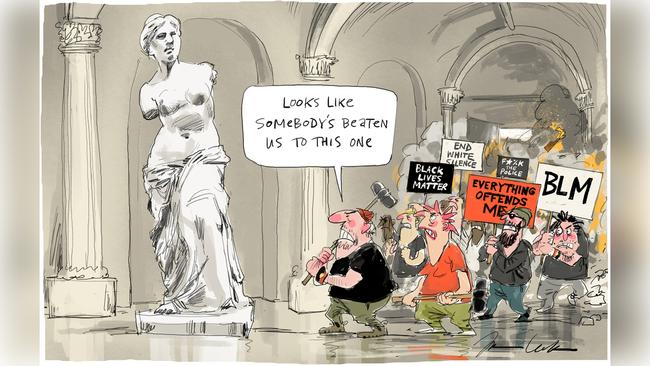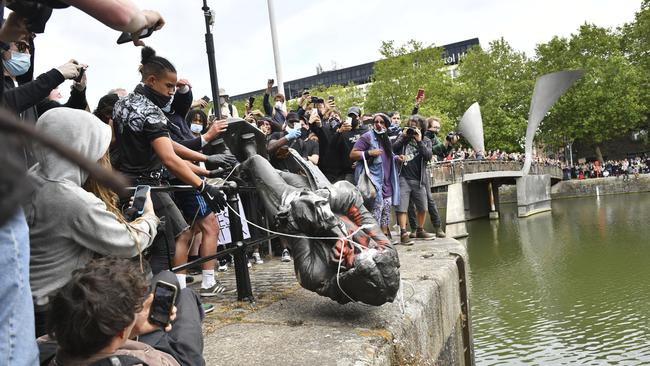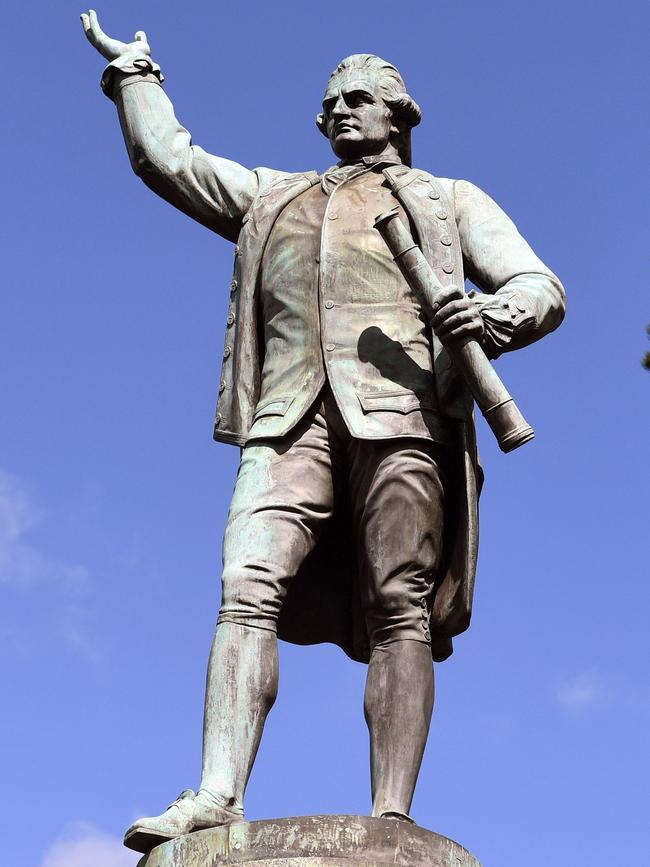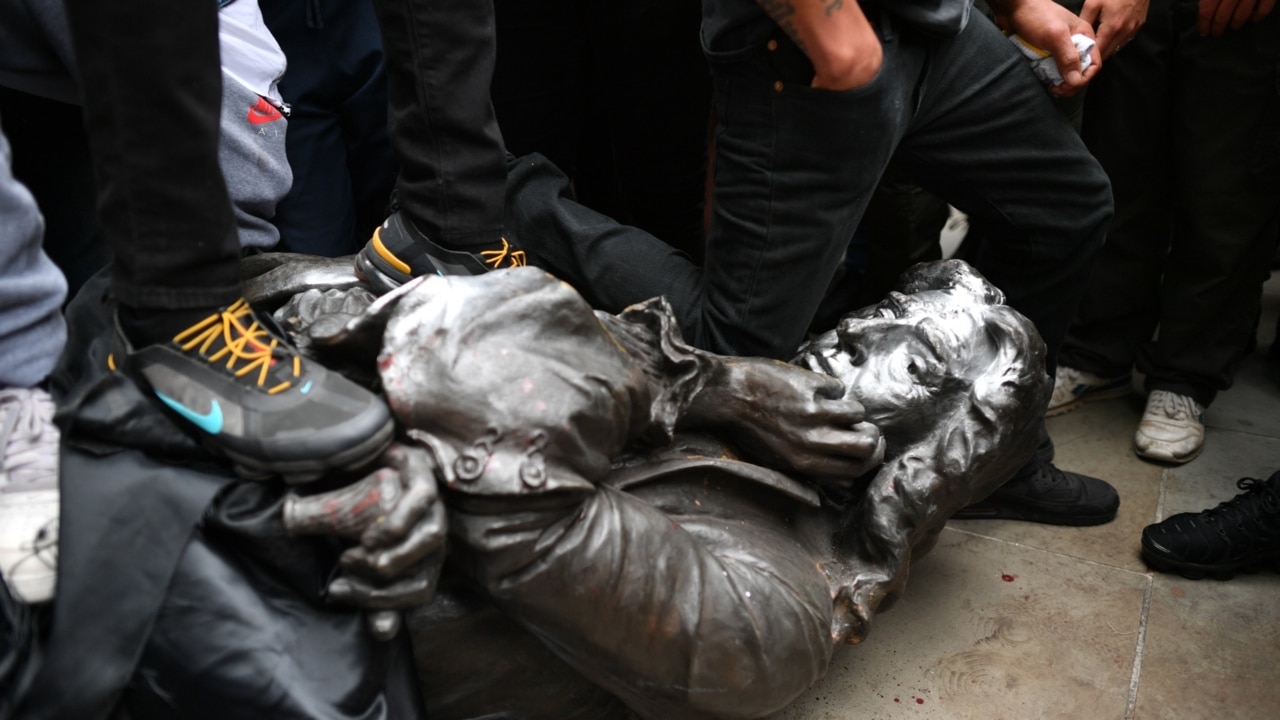Statues fall as history outlives its own relics

Which is not to say that Edward Colston was any saint. Quite the contrary. The man whose statue was dumped in Bristol Harbour last Sunday was a prominent and notoriously brutal slave trader. In his case it is hard not to feel that some historiographical justice has been served.
As British historian David Olusoga pointed out in relation to the toppling of Colston in Bristol, “this was not an attack on history. This is history.” The removal and ritualistic drowning of Colston’s statue has become part of the story of British slavery and its remembrance. It is something the statue erectors probably never envisioned.
To my mind this is the issue at the heart of our now perennial debates about statues and history. They exist in our time, but too often we pretend they belong only to our past. We can fall into the trap of preserving or defending them just because they are old.

Perhaps the clearest exemplars of this phenomenon are those statues of Confederate leaders that adorn prominent civic spaces in the southern states of the US. They depict figures who fought to retain the institution of slavery and were usually erected in much later periods of resurgent racism and segregation. Rather than memorials of what happened, they are monuments to the type of society their erectors hoped to maintain or build.
The much-contested Robert E. Lee statue in Charlottesville, Virginia, for instance, dates to the same period in which Charlottesville saw a resurgent Ku Klux Klan. It is the product of an abhorrent social consensus, designed to memorialise its ideology. Yet while some of the defenders of these Confederate relics may share such ideological sympathies, others voice their concerns in terms of abstract “heritage value”.

While there are differences, Australia has its monumental parallels. Prompted by the 2017 debate over the American Confederate statues, Stan Grant suggested modifying the plaque on the James Cook monument in Sydney’s Hyde Park to reflect the fact Cook did not “discover” Australia. Typical of Australia’s version of the hyper-polarised “history war” mentality, much very partisan debate swirled around the issue of Cook’s voyage and the wider imperial history it heralded on this continent. Amid all this history noise the nuanced story of the statue itself got largely overlooked.
For the record, one of the organisers behind it was prominent colonial jurist Alfred Stephen, who had publicly called for the extermination of the Aboriginal Tasmanians. There were also some terribly racist sentiments expressed about the first 60,000-odd years of Australian history in song at the official unveiling ceremony in 1879. The statue does not say much about Cook, but when its story is examined closely it speaks volumes about late 19th-century white Australia and its attitudes.
Which of course is the real problem with statues: they are designed to project certain attitudes, yet those same attitudes rarely persist. That being so, I think it is entirely fair that our public monumental landscape should be regularly revised.

But before we can even have conversations about what might be changed, or removed, or added, we need to revitalise a sense of reasoned debate. Our history is certainly fraught, and at times downright horrible. I know this especially through some of the work that I have done finding clear evidence of government-sponsored genocide in Tasmania. But our national history also has its strengths and, to borrow Martin Luther King Jr’s magnificent phrase, some arcs of our national narrative have bent towards justice. We are one of the most successful multicultural nations on earth, even if a KKK-inspired group called the Anglo-Saxon Clan did gather not far from Cook’s statue in Sydney in the 1920s. We need to be able to embrace this complexity.
In an age where people seem increasingly to get their information from targeted social media feeds, catering to their preferences and prejudices, statues can help focus our historical energies.
Whether we like these monuments or not, know nothing or everything about the people they represent, they are tactile things anchored in the real world. We can touch them, deface them, repair them or even replace them. They force us to face up to the past, and that is no bad thing. The statue of Colston in Bristol will never be forgotten, nor now will his impious legacy.
The wave of anger that washed Colston into Bristol Harbour might have emanated from Minneapolis, but its force is not yet spent. That precedent has prompted the toppling of other statues, including King Leopold II in Belgium.
Each fallen statue adds force to a worldwide surge, as more people seek redress for historic injustices and obfuscations. In revisiting the statuary of our forebears and the messages they contain, we are not undoing their history so much as writing our own.
Nick Brodie is a Hobart-based historian and author. His latest book is Under Fire (Hardie Grant Publishing).







Western history has seen many statues torn down. From the idols worshipped in Canaan to the saintly medieval figures that decorated the British Isles, destruction has been one of the bluntest forms of historical revisionism.